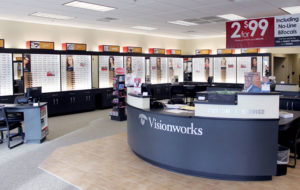
The ideal retail environment makes customers feel comfortable, encouraging them – and making it easy for them – to make a purchase. An effective retail environment analysis evaluates every aspect of the physical store environment and the effect it has on customers. This is an excellent way to identify which aspects of your store are performing well and which areas need to be improved. So what should be included in a retail environment analysis?
8 Areas to Evaluate in a Retail Environment Analysis
- Store layout – Your store should be easy to navigate and should help direct foot traffic to every corner of your store. It should have a natural flow, leading customers to products they need or might enjoy in a logical progression. Your aisles should also be wide enough for customers to pass each other with ease and provide ample room to maneuver carts, strollers, wheelchairs and walkers.
- Lighting – Customers like stores that are well-lit. You should ensure that every area of your store has proper lighting and there are no dimly lit corners. But this doesn’t mean you should go overboard: overly bright industrial lighting can also be a turn-off to customers. Instead, try to incorporate natural lighting wherever possible to create a more comfortable, ambient light effect.
- Music – The type of music you play in your store should correlate to both your median customer age and the type of products you are selling. But more important than the type of music you choose is how loud it is playing. Customers prefer music to be played at a soft level – loud enough to hear clearly, but not loud enough to be intrusive. Overhead paging systems can also be annoying and off-putting to shoppers. Instead, communicate with your staff through radios or page through your phone system rather than overhead speakers.
- Scent – Customers enjoy well-ventilated spaces with no unpleasant odors. Strong “pleasant” odors (such as from candles or room fresheners) can also be overwhelming if they are confined to a small space or your store doesn’t have sufficient air flow.
- Atmosphere – Your store should be kept at a comfortable seasonable temperature and should be clean at all times. While large cleaning (mopping floors, cleaning windows, etc.) should take place after hours, employees should be in the habit of straightening and cleaning small messes while the store is open. Sticky floors from spilled coffee, disorganized displays, or aisles blocked by boxes are a large turn-off for shoppers.
- Ease of checkout – Do you frequently have long checkout lines? Do the registers have sufficient counter space to hold merchandise? A pleasant shopping experience can quickly be undone by a frustrating checkout. If you frequently have long checkout times, consider installing more registers or reworking your current checkout space to speed up the process.
- Signage – Customers like products to be clearly marked with obvious pricing details. They also like signs that give key details about a product, enabling them to make an informed purchasing decision.
- Displays – Customers want merchandise to be easily accessible. Displays that are too high, too low, too deep, or too cluttered will be passed over by shoppers. Instead, displays should show products in their best light and make it easy for customers to interact with the products.
Milford Enterprises, Inc. has been helping clients create dynamic retail environments for over three decades. For more information on how we can help revolutionize your store, call us today at 215-538-2778 or email us at sales@milfordei.com

Leave a Reply